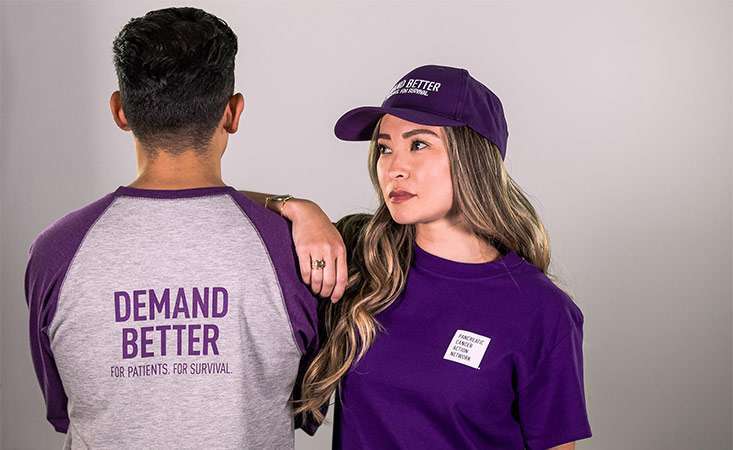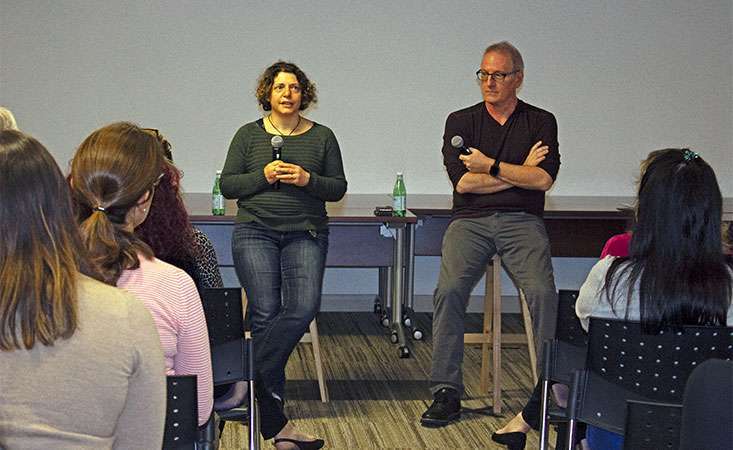
An imaging test may find a tumor on the pancreas, which could be benign (non-cancerous) or malignant (cancerous). Getting a tissue sample of the tumor (called a biopsy) is the only way for your doctor to make an exact diagnosis.
Going in for a biopsy can cause a range of feelings, especially if you’re not sure what to expect. To feel more prepared and in control, here are some helpful things to know ahead of your biopsy.
- Your doctor will work with you to schedule the biopsy.
Your doctor may refer you to a gastroenterologist, who is a medical professional who specializes in the management of gastrointestinal disorders, including pancreatic cancers. In most cases, these are the specialists who perform the biopsy.
- There are a few ways to get a tumor biopsy. Your doctor will recommend the best type for you.
Your doctor will consider many factors, such as the tumor’s location and your current medical condition when choosing the most appropriate type for you.
A fine needle aspiration (FNA) or a core needle biopsy (CNB) may be used to retrieve the tissue needed for biopsy. An FNA is more common than a CNB. But because a CNB uses a larger needle, it can take a larger sample, which can be helpful if your doctor wants to run additional tests. There are multiple procedures used to perform these biopsies:
ERCP-guided biopsy: An endoscopic retrograde cholangiopancreatography (ERCP) is like an EUS, although the images produced are different. An ERCP also uses contrast dye, which makes it possible for the doctor to get an X-ray picture of the digestive tract to guide the needle.
Depending on the needs of the patient, other biopsy types, such as a brush biopsy or forceps biopsy, can be done during an ERCP in place of a needle.
CT-guided biopsy: After locating the tumor using a Computed Tomography (CT) test, a needle is injected through the skin into the pancreas to get the biopsy.
Surgery: If you’re already scheduled for surgery to remove the tumor, your doctor may be able to get the tissue sample then.
Contact PanCAN Patient Services to learn more about specific biopsy types and when they are used.
- Patients may need more than one biopsy.
It may be difficult to get a conclusive, or definitive, biopsy to help determine the type of cancer you have.
If your result is inconclusive or does not match earlier imaging test results or your symptoms, you may want a second opinion. You have a right to seek a second opinion. The Pancreatic Cancer Action Network strongly recommends you seek a second opinion, as needed, at any point in your diagnosis.
- Biopsies can help guide treatment decisions.
In addition to determining if the tumor is cancerous, and the type of cancer you have, a biopsy may also uncover important, specific details about the tumor that will help your healthcare team determine your best treatment options.
For example, patients can choose to undergo molecular profiling. Molecular profiling is a test that examines a tumor’s tissue to get information about its makeup. Molecular profiling may find certain characteristics, or biomarkers, that suggest a tumor may be responsive to certain types of therapy, which can help inform personalized treatment decisions.
- Biopsy results can take anywhere from a few days to a few weeks.
After the procedure, the biopsy will be sent to a lab for examination. Most patients receive their results within a few weeks. Once the results are in, you can work with your healthcare team on next steps.










